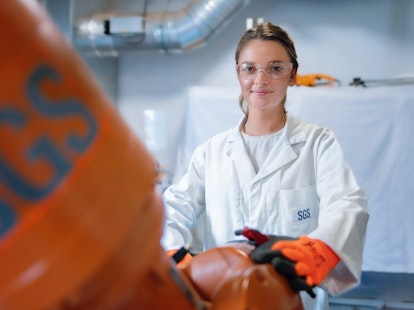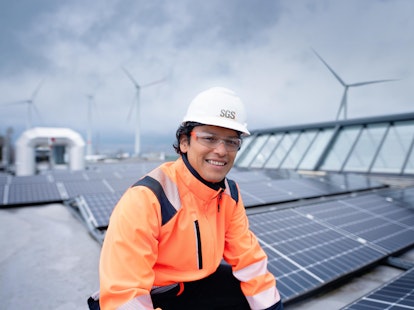
The one subject guaranteed to get everyone hot under the collar is the subject of the marking of Ex Equipment. There is not much disagreement about the need to identify the equipment type, its operational parameters and its manufacturer, but everyone seems to have an opinion on how the hazardous area code (or marking string) should be expressed.
The discussions at the recent IEC TC31 standards meetings in Sydney, Australia were no exception. First, we need an historical perspective. In the beginning, before the Second World War, there was only the need to confirm that a piece of equipment was intended to be installed in a hazardous area. It was pretty obvious if it was either flameproof or intrinsically safe, and everybody knew the difference.
Then we started to divide our hazardous areas according to how severe we thought the hazard might be: originally into Divisions (still maintained in the USA) and then Zones, with Zone 0 indicating the greatest risk and Zone 2 the least risk. It was realised that the traditional methods of protection, flameproof and intrinsic safety, were more costly than needed for use in Zone 2, so the idea of “Division 2” or “Zone 2” equipment was established. Although originally mainly well-constructed industrial equipment which did not arc or spark in normal operation, this grew into a separately recognised standard which became IEC 60079-15, providing protection in “normal operation”.
Flameproof protection was originally IEC 60079, but as it was later decided to put all the forms of protection in the same series, flameproof became IEC 60079-1, with the other concepts and ideas forming subsequent part numbers, until we are now talking about introducing IEC 60079-40 (although not all intermediate part numbers are currently used). Because Part 1 was then well established as flameproof protection, when it was found necessary to create a single standard containing a number of common requirements applicable to most of the protection concepts, this was given the designation IEC 60079-0.
With each new type of protection, a letter “code” was allocated, so that people operating on a plant would be able to tell the type of protection and be able to inspect and maintain accordingly. This letter code was also used to determine the suitability of a particular item of equipment for installation in a given zone.
Now we have single standards covering individual types of protection, but for various levels of protection, so the letter “m” for encapsulation, for example, is always followed by a second letter indicating the level of protection, giving us “ma”, “mb” or “mc”.
Equipment now is more commonly protected by more than one form of protection. For example a typical fluorescent luminaire may have the lamps and terminals protected by increased safety “e” with the ballast encapsulated “m” or powder filled “q”, while the isolating switch is flameproof “d”.
For a long time, there was an argument whether the first letter in the marking string should represent the type of protection applied to the wiring terminals, or should represent the protection applied to the largest part of the equipment. For example, should a flameproof motor with an increased safety terminal box be marked Ex e d or Ex d e? Eventually, the decision was taken that the letters would be listed in alphabetical order so that no one would be able to read the wrong significance into that order.
It was also agreed that the equipment would be marked with the Equipment Protection Level (EPL) - a single, short form two-letter designator that explicitly indicated the overall level of protection and, therefore, the Zone for which it was most suitable. Internationally, this followed the principle already established in Europe with the ATEX Categories. The Equipment is not marked with the Zone, as that is a property of the physical location in a plant, and not a property of the equipment. Although there is a “normal correspondence” that equipment with EPL Ga can go in Zone 0, Gb in Zone 1 and Gc in Zone 2, this is not an absolute alignment and the ATEX User Directive 1999/92/EC (the DSEAR regulations in the UK) specifically allows a different alignment following a full risk assessment.
The current published edition of IEC 60079-0 also requires that marking for hazardous gas or vapour atmospheres and marking for hazardous dust atmospheres should not be combined. This is to indicate two separate possible uses of the equipment, and not that the equipment is suitable for use in a hybrid mixture of gas and dust.
From the Sydney discussion. With the publication of ISO 80079 Parts 36 and 37 in 2015, we now have IECEx certificates issued for the first time for non-electrical equipment. The symbol “h” has been allocated to indicate the protection of non-electrical equipment, whatever the detailed method applied.
The view of the project team developing that standard was that the installer and user did not need to know the actual protection methods applied from the marking, as the details would have to be elaborated in the instruction documents. As these standards are now also harmonised as EN ISO versions, they are replacing the EN 13463 series that were European only standards, with this change in marking being probably the one thing that will impinge on all equipment.
The marking from EN 13463-1 could not be used at the international level, since it was intertwined with the legal marking of the ATEX Directive. Although used as shorthand within the standards, the letters “c” constructional safety, “b” control of ignition sources and “k” liquid immersed, do not appear as part of the marking in the new standards.
When considering an item of equipment that is only non-electrical, there is no problem but, when a single item of equipment with both electrical and non-electrical protection is considered, questions arise how it should be coded.
There is a view that the electrical and non-electrical marking should not be mixed, with two separate lines of code used (as with a product suitable for use in either a gas or a dust hazard).
At SGS Baseefa, we have not subscribed to that view, but consider that there should be just one line of code, with the letter “h” taking its alphabetical place in the marking string. That way, there will just be one EPL, one Group and one Temperature Class marked, putting the potential use of the equipment beyond doubt.
For example, would an installer prefer to see:
- Ex db eb IIB T4 Gb
- Ex h IIC T3 Ga
or:
- Ex db eb h IIB T3 Gb
Neither IEC 60079-0 not ISO 80079-36 cover the subject of the marking for a piece of combined equipment, so the subject is, as yet, undefined in terms of standardisation. At the Sydney meeting of the TC31 Chairman’s Advisory Group (CAG) it was decided to put the problem in the scope of TC31 WG22, which is responsible for the maintenance of IEC 60079-0. WG22 will then make a recommendation to the full TC31 meeting for a decision. This should happen during the meetings planned for Vladivostok in October so, until then, expect to see both forms of the marking, according to the preference of the individual certification body.
SGS Baseefa’s Technical Manager Ron Sinclair is chairman of BSI Committee EXL/31, responsible for the UK input to both European and International standards for Electrical Equipment for use in potentially explosive atmospheres. He is chairman of Cenelec TC31 and also responsible for representing electrical standardisation interests at the European Commission’s ATEX Standing Committee. Until 2014, he chaired ExTAG, the Test and Assessment Group of the IECEx International Certification Scheme and from 2016 he has taken over chairmanship of the IECEx Service Facility Certification Committee. Ron was awarded an MBE in the 2011 New Year Honours List for services to Certification and Standardisation.
For more information on how we can help you, please contact us on:
t: +44 (0)1298 766600
e: Baseefa@sgs.com
www.sgs.co.uk/sgsbaseefa
ABOUT SGS
SGS is the world’s leading inspection, verification, testing and certification company. SGS is recognized as the global benchmark for quality and integrity. With more than 90,000 employees, SGS operates a network of over 2,000 offices and laboratories around the world.
Inward Way,
Rossmore Business Park, CH65 3EN,
Ellesmere Port, Cheshire, United Kingdom



